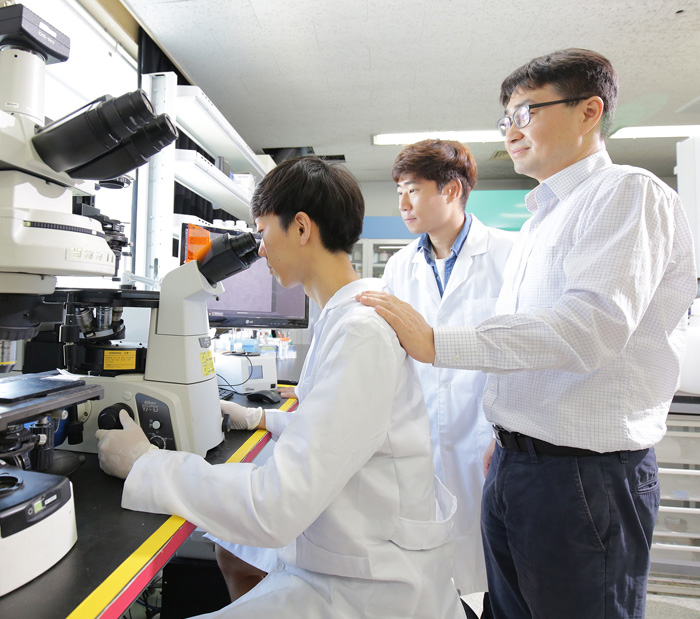Research Stories
Prof. Gi Ra YI Develops New Method for Mass Production of Patchy Particles
Associate Professor Gi-Ra YI in School of Chemical Engineering, Sungkyunkwan University and Assistant Professor Stefano SACANNA at chemistry department of New York University developed together new method for mass production of patchy particles which can be assembled as do molecules.
Chemical Engineering
Prof.
YI, GI RA
□ Associate Professor Gi-Ra YI in School of Chemical Engineering, Sungkyunkwan University and Assistant Professor Stefano SACANNA at chemistry department of New York University developed together new method for mass production of patchy particles which can be assembled as do molecules.
□ Researchers began with a set of four large solid polystyrene spheres arranged in a tetrahedral manner around a smaller, softer silicone oil droplet. These two components are oppositely charged and thus spontaneously assemble into clusters. They then add a plasticiser (terahydrofuran), which allows the polystyrene spheres to flow and reconfigure into a single, bigger sphere thanks to surface tension. This process can be likened to the way balls of playdough can be squashed together. As the outer spheres fuse together to form a single sphere, the inner silicone oil droplet in fact deforms to fill the spaces inside the sphere. It is eventually pushed out to form a tetrahedral pattern of patches on the sphere’s surface. These patchy spherical-shaped particles are produced in over 90% yield.
□ Adding patches to self-assembling systems in this way could allow us to produce colloidal nanostructures. Until now, however, it was not easy to yield enough particles to make a material big enough to hold in their hands.
□ On the other hand, at low pH, oil droplets surrounded with four spheres can be stayed in the center during deformation by adding plasicitizer, in which oil droplets are first faceted into tetrahedra and then become spheres. Researchers can polymerized in the middle of deformation which produced uniform tetraheron particles.
□ The research is detailed in Nature doi:10.1038/nature23901.
□ “Mass production of patchy particles has been one of most important problem in fabricating nanostructured materials by self-assembly” says Prof. Gi-Ra Yi. This will be used now for builidng up new colloidal structures which may be used for even 3D printers with complex internal nanostructures.

